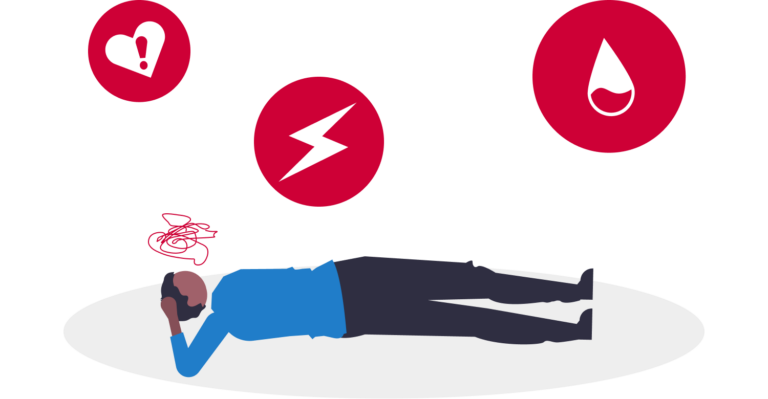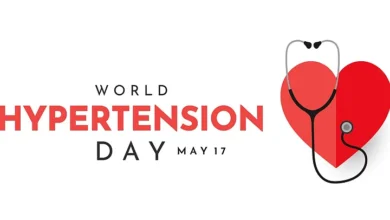Shock: When the Circulatory System is Taken Aback

When a Bodija trader hears about shock, he might think of a person being startled or more likely, he might think of a person being electrocuted. A better-informed person may know it is a technical term used by doctors even though she can’t say exactly what it is. She may have heard about anaphylactic shock when her cousin nearly died from a bee sting, or have wondered if heat stroke is a form of shock too.
As you read the last paragraph, you may have identified with either person; you may have had an idea of what shock means but not understood the medical explanation. You are not alone—I must confess that there are many like you. Hopefully, at the end of this article you would be in a better position to explain to a layman what shock is.
Put simply, when doctors say shock, they refer a case of acute circulatory failure leading to hypo-perfusion of tissues/organs. Now, that is a mouthful but let’s go over it slowly. To understand shock, a basic understanding of the circulatory system is needed. In a simple schema, the circulatory system can be said to be a system of closed tubes, a pump and fluid. The tubes are the blood vessels (arteries, capillaries and veins), the pump is the heart, and the fluid is blood.
If there is a problem with any of these three components, to the extent that the circulatory needs of the body are not met, shock results. Based on the components of the circulatory system, there are four broad categories of shock: Pump Problems (Cardiogenic shock), Fluid problems (Hypovolemic shock) and Tube problems (Obstructive and Distributive shock).
- Cardiogenic shock, as the name implies arises from primary problems with the heart. This leads to inability to carry out its mechanical function of pumping blood round the body. It could be caused by myocardial infraction, arrhythmias, acute valvular failures etc. Fun fact: it might interest our Bodija trader that electrocution when it leads to shock falls under this category.
- Hypovolemic shock, is a problem with blood volume. It occurs when there is an acute fall in blood volume (hypo-volumic shock; get it?). This is due to uncontrolled haemorrhage especially in trauma e.g. road traffic accidents. It could also be due to large skin area burns and gastrointestinal losses like severe vomiting or diarrhoea. Fun fact: for our better-informed lady who was left wondering if a heat stroke is related to shock, yes, it is. It an extreme case of heat exhaustion where there is severe dehydration and the body is unable to control its core temperature.
- Obstructive shock, occurs when there is a hindrance to system-wide circulation of blood. It could be caused by cardiac tamponade; a situation in which the heart wall is damaged and it bleeds into the closed bag that it is contained in (the pericardial sac). Eventually with the accumulation of blood in the same closed space with the heart, pressure builds up, pressing on the heart and eventually stops it from being able to pump out appropriately. The other common causes are a tension pneumothorax (when air gets into the pleural cavity (the bag around the lung) so much that it presses on the lungs and the heart), and a large pulmonary embolism—a blockage in the pulmonary trunk (the vessel that carries blood from the heart to the lungs).
- Distributive shock. This one is a bit tricky, but I’ll try to explain. Imagine that you have a 5-litre capacity tube system used to distribute 5 litres of fluid. Now the capacity of the system is increased to 8 litres but the available fluid is still 5 litres. The fluid which was previously distributed at an adequate and proportionate volume is no longer so, and invariably many areas would be under-served as each part struggles to divert more fluid to themselves. In distributive shock, there is system wide vasodilation (widening of the blood vessels) and thus a rapid fall in total peripheral resistance with the heart ultimately being unable to maintain cardiac output. Common causes are sepsis, anaphylaxis, neurogenic causes (spinal cord injury), endocrine causes (e.g. Addison’s disease), drugs amongst others
Now that we know what shock entails in the medical context, I think it’s time to part ways. But before then, let’s talk briefly about management. Generally, shock is seen more in the hospital than as a part of everyday life, so you might not randomly witness someone in shock. But for causes of shock that are common-place like electrocution, heat stroke, severe gastrointestinal tract losses, burns and trauma, basic first aid is vital. A person in shock would have cold, clammy (maybe sweaty) skin, a weak and/or fast pulse and shallow breathing. The person may be unresponsive and gasp for air. It is important to get the victim quickly to an equipped medical facility immediately. In the meantime, steps can be taken to alleviate shock if the cause is obvious, e.g. if the person is bleeding, apply pressure to the wound and raise the affected limb (where applicable) to reduce the rate of blood loss.
In conclusion, this one article has definitely not made you a doctor proficient at dealing with shock. That was not the aim, anyway. But now you understand the basics of shock in the medical context. And so next time the Bodija trader or better-informed person are confused about shock, you can explain it to them in simple language. That, I consider a good outcome.
Onymous




